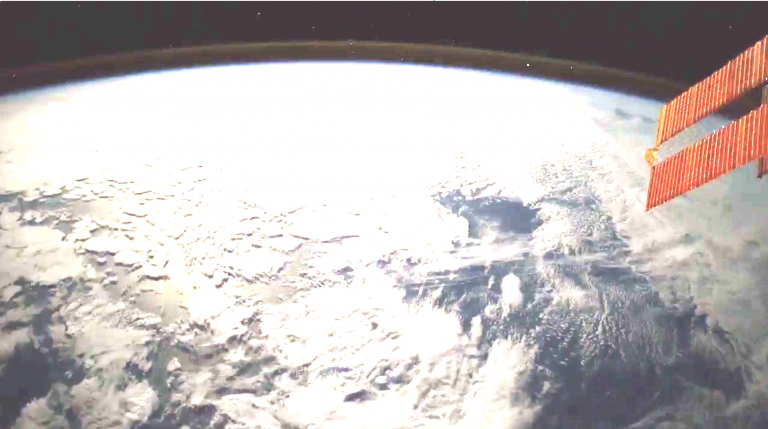An amazing time-lapse video taken by a European Space Agency (ESA) astronaut on board the International Space Station (ISS) captured what appears to be a “fireball” entering the earth’s atmosphere, along with a massive lightning show.

A series of nighttime photos were taken by astronaut Paolo Nespoli on Nov. 5 and stitched together to create the impressive video.
READ MORE: NASA’s Cassini ends mission by crashing into Saturn
ESA experts believe the flash seen in the upper right corner of the time-lapse around the seven-second mark was a “fireball.”
“Indeed it looks like a bright meteor, or fireball,” Detlet Koschny, an expert at the ESA’s Space Situational Awareness Programm wrote on the agency’s website. “We call bright meteors (brighter than Venus), a fireball. I guess this would qualify as a fireball.”
Koschny’s estimated the object spotted in the images was smaller than a metre in diametre, and suspected it was travelling very quickly, at around 32 kilometres per second.
“A meteor is the light you see when a meteoroid or asteroid enters the atmosphere,” Koschny explained in the post. “The object that causes it – the little piece of rock – is called ‘meteoroid’ if smaller than one metre, ‘asteroid’ if larger than one metre.”
READ MORE: European Space Agency believes Mars lander may have exploded
Koschny added that the way the object illuminated the surrounding clouds, suggested it could have been a meteor or a piece of space debris entering at a steep angle.
The “fireball” was captured off the west coast of South Africa as the space station crossed the Earth from the southern Atlantic to Kazakhstan.
A huge lightning storm could also be seen covering most of central Africa before the images captured the Red Sea and the Persian Gulf.



Comments